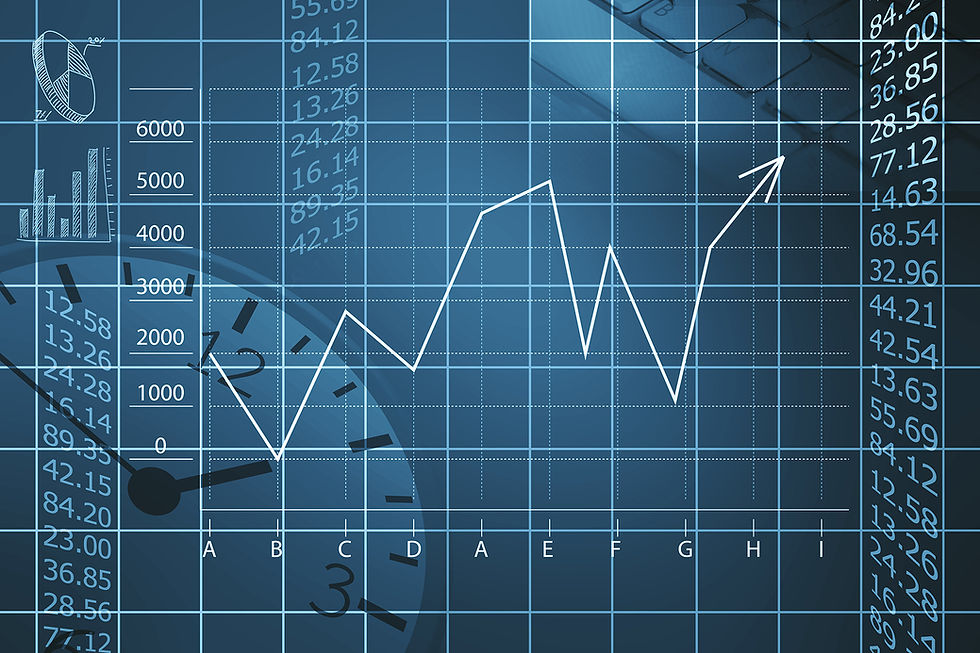What are you talking about? A guide on how to read and construct sustainability reports.
- Agnes Sopel

- Aug 8, 2021
- 7 min read

The skill of reading sustainability reports is useful when you are evaluating your sustainability strategies. It also allows to compare what the business is going with other organisations.
The most popular are the reports created in accordance with GR4. I have briefly touched on the GRI standards in my previous blog, but today, I would like to look closely at how these are designed and review some examples of reports available online.
I chose Morgan Sindall construction group. (Links to an external site.) because it has been produced with GRI GR4 framework, it is reasonable short (only 67 pages!) and the company website is quite user friendly and easy to navigate, which allows to grasp what it is doing and what it wants to achieve.
Morgan Sindall
Morgan Sindall is a construction and regeneration group. They provide services in construction, infrastructure, property services and housing, to name a few. Made out of eight businesses, who specialise in different fields, the business structure is decentralised, which allows to respond quickly to market needs.
It is an interesting concept, and I have touched on similar structure when talking about teams dynamic in an organisation. When the team is made out from equally responsible and specialised business units (departments), the effectiveness if the team is higher. As opposed to set ups of traditional hierarchical structure. You may want to explore a little more about this topic here. https://agnessopel.wixsite.com/qualityworkplace/post/the-whole-is-greater-than-the-sum-of-its-parts-key-ingredients-of-modern-teams
Coming back to Morgan Sindall, the organisation carry out major infrastructure projects, engineering and design for the public and commercial sectors.
"Creating inspiring places that enhance the communities in which we live, learn, work, play, care and protect. Working on projects and frameworks from £50,000 to over £1bn."
Source: Morgan Sindall Construction
The Sustainability Report 2013 has the three spheres of Triple bottom line embed with it: People, Planet, Profit. This would drive the entire strategy of the organisation. The main content are set out in a way, suitable for anyone who is not familiar with GRI GR4.

Commit
In the first pages of the report, the organisation explains its approach.
Within the principles, the business recognises six major commitments:
- addressing safety,
- developing talent,
- reducing energy consumption and carbon emissions,
- reducing waste,
- sustainable procurement,
- enhancing local economic growth.
It is clear that the three principle: People, Planet and Profit are at heart of the approach. It is useful to know, as well, that GRI Standards provide detailed guidelines and frameworks on development of any commitment or undertakings. Whatever the business strategy and commitments are, GRI Standards can help to explore the "best action" in more detail, and therefore, drive the improvements.
The commitment model in the report is common with many other organisations, but the business adds its own branding on the Triple Bottom Line model calling it Total Commitment.

Engage stakeholders
The business recognised stakeholders engagement and the important role interested parties play in the future of the business. The commitments were widely discussed with all of the 2000 stakeholders recognised and confirmed valid for the group. By engaging stakeholders the business recognises opportunities in creating even more value. It also enables to discover "missing pieces", gain buy-in, foster active support, shared ownership and keeping up with the best practice.
We get detailed explanation on how the organisation engages with the stakeholders.

Set Objectives and Targets
From the commitments and policy, the business further recognised eight targets to be met. The objectives are driving the report and are evaluated periodically, available for all stakeholders involved.
Set authorities
The report also mentions the importance of the right structure in the organisation, essential in delivering sustainability improvements. They have created Sustainability Steering Group that provide leadership, advise and intelligence to the sustainability agenda. Appropriate procedures and policies have also been developed at each level of the organisation.
Financial information performance
The first part of the report provides basic information about the business, its market, products and services. This also include the Revenue and Operating profit, compare with previous year for the entire group.
Further down, the different sectors are evaluated in terms of Revenue and Profit - Construction and Infrastructure, Fit out, Affordable housing, Urban Regeneration and Investments.
Sustainability Commitments performance
The report than evaluates the progress within each of the six commitments identified. For each one of them relevant metrics are selected and monitored. As an example within " A safe working environment" commitment the number of RIDDOR incidents is monitored. Within the "Developing talented employees" agenda, the average training days per employee is monitored. An interesting metric within the procurement part of "Group wide agreements % spent". The business set minimum sustainability criteria within the procurement activities and monitors the % of those being met by suppliers. This is a perfect example of effective sustainability processes implemented within the procurement departments with minimum criteria, as well as consideration that the entire group has to be evaluated.
To support the sustainability efforts, the business also present and provide information on additional standards and awards gained as part of the strategy.

Explain your plan
The report provides the information of the sustainability approach. The business see it as a way of creating value. Recognition is given to the fact that the best way of achieving it is to balance the need to deliver financial return short-term, but also consideration of wider social, environmental and economic impacts over the long term. The business recognises that the most effective way to mitigate risks and allow business to grow is to be proactive, action plans and also deal with the consequences of negative impacts as they occur.
The group developed a roadmap to sustainability, which provides it with a plan and actionable steps to achieve its objectives.
Recognise risks and opportunities
The business has incorporated a risk management framework to recognise and prevent challenges facing the group now and in the future. Risk registers have been created across the business on project, division and the whole group level. Risks specific to sustainability are also recognised. Each risk area is than examined within the report including the impact it has on the organisation, mitigation activities planned and undertaken and the recognised opportunities within the risk area.

Recognise priorities and issues
Once the risks and opportunities are outlined, there may be many issues recognised and many improvement ideas. Again, the report highlights the fact that the risks are being evaluated by the stakeholders and prioritised in accordance with the stakeholders view on the most critical for the group. It additionally recognises issues with workplace diversity, community engagement and water use as considerations for actions in the future.

Define action plan
Based on the performance results, identified issues and stakeholders engagement work, the report provides a range of action plan areas. Each action area is presented along with the commitment to ensure that the objectives stay relevant with the Total Commitments. Each commitment has again been evaluated and project actions indemnified within them, including metrics, timescales and responsibilities.

Toshiba
Another, quite comprehensive report I would like to evaluate briefly is Toshiba Sustainability Report 2020.
The organisation also published their reporting policy, where they commit to report sincerely on the issues materials, both for their stakeholders and the Toshiba Group itself. The report content, need to gain an approval by executives in charge of sustainability, environment, legal affairs, and strategic planning.
Business data

Toshiba Group provides an overview of its financial and non-financial management in one integrated report. The report embrace the main business activities: power generation systems, renewable energy generation, power transmission and distribution systems. The main markets and business areas are also listed. This includes elevators and escalators for building and facilities, ventilation, lightning, printing solutions, electronic devices and storage, digital solutions, battery business among many others.
Purpose and values
The report provides information on the commitments and values the groups has embedded in their corporate culture. Business wants to see possibilities in everything thy do, make the planet safer and society having a comfortable life in its existence.
Similar to the Morgan Sindall's information, Toshiba recognises that they have responsibilities towards the planet, environment and people, therefore should not simply pursue short-term profits. By evaluating the impact of their activity on the society, they are also able to adopt new technologies, enhance business with "know-how" intelligence and improve business activities.
The statement "Committed to People, Committed to Future" expresses the business's credibility into contribution to the development of society through the business activities. Similarly to previous report, business wants to maximise the value and meet stakeholders needs.

In the leaders commitment Toshiba mentions the 10 principles of United Nations Global Compact that was signed by the organisation in 2004. The management wants to address the four fundamentals of human rights, labour, environment and anti-corruption. The business aims to remain ethical and transparent at all business levels.
The report also presents the new environmental strategy. Starting with climate change, depletion of energy and resources, waster shortages and loss in biodiversity.The business recognises the importance of 'circular economy".
Standards of conduct
In the report, Toshiba talks about their standards of conduct. It is believed that the management principles will bring the desired outcome in the future. The business wants to strengthen their compliance awareness, enhance procurement practices and respect human rights. The code of conduct also focuses on customer satisfaction and meeting quality expectations. It provides a policy framework for all business activities including sales and marketing, production and technology, bribery, environment, engineering, accounting, advertising. All business functions policies have embedded care for 3Ps (People, Planet and Profit), and through it, contribute to meeting the overall sustainability goals of the entire group.
Sustainability Management Structure

To promote Corporate Social Responsibility principles, Toshiba has put in place Sustainability Management Structure. Corporate Environmental Management Committee, Risk Compliance Committee and other committees have been established to promote action plans and monitoring key performance indicators based on the policy decision in each area of their responsibilities.
Material Issues
Similarly to the previously evaluated report, Toshiba group engaged their stakeholders to determine the key Material issues: Respect for Human Rights, Corporate Social Responsibility on the Supply Chain and Environmental Management. The report also describes the process of Material Issue identification and prioritisation principles.
Performance Indicators

The performance indicators have been chosen in accordance with ISO 26000 indicators. Each of the areas have been suitably evaluated for Targets and Achievements. This includes: Governance, Environment, Social, Occupational Health and Safety.
Each area has a comprehensive plan of action for the future and clearly defined goals to drive the sustainability improvements across the group.
Bibliography:
Morgan Sindall, Sustainability Report 2013, https://www.morgansindall.com/assets/Uploads/Downloads/2013/34604ebd46/sustainability-report-2013.pdf (accessed on 08/08/2021)
Toshiba, 2020, Sustainability Report, https://www.toshiba.co.jp/sustainability/en/report/index.htm (accessed on 08/08/2021)



Comments